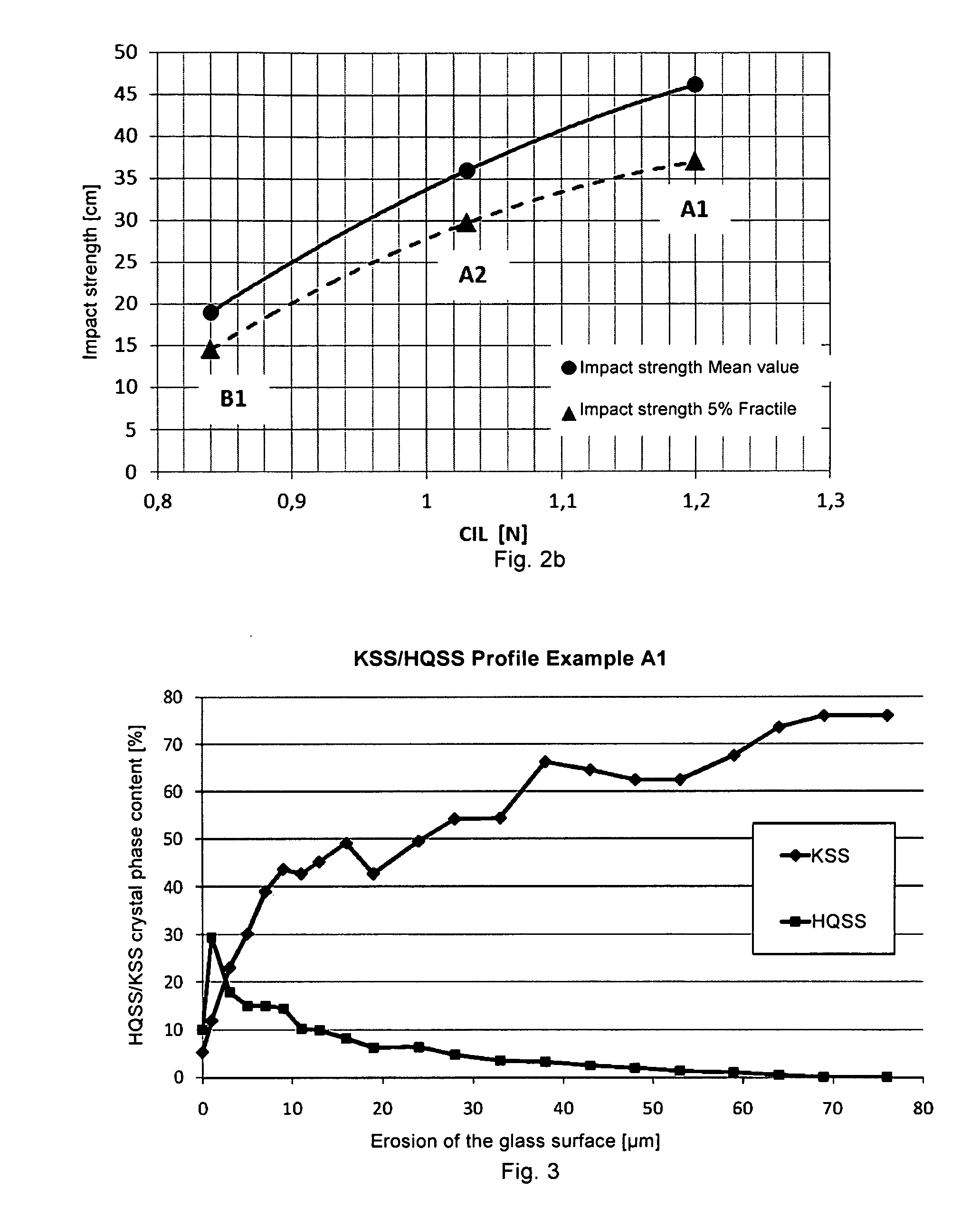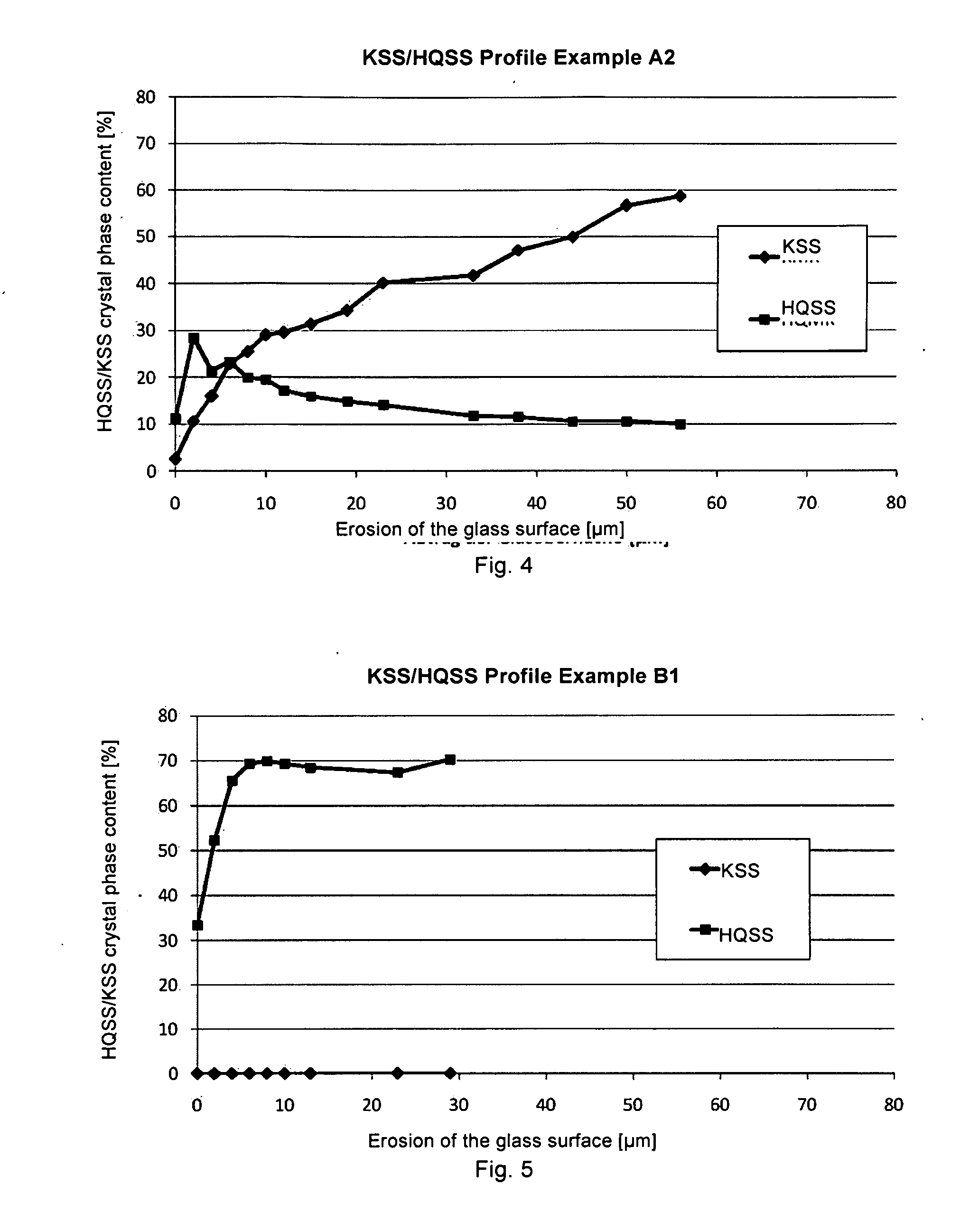Glass ceramic substrate made of a transparent, colored LAS glass ceramic and method for producing it
a technology of glass ceramic, which is applied in the field of glass ceramic substrates made of transparent colored las glass ceramic, can solve the problems of inability to fully transmit light, inability to meet the requirements of use, so as to achieve the effect of increasing specific strength and increasing strength
- Summary
- Abstract
- Description
- Claims
- Application Information
AI Technical Summary
Benefits of technology
Problems solved by technology
Method used
Image
Examples
Embodiment Construction
[0046]For measurement of the fracture strength, the “crack initiation load” (“CIL”) test method, which is known as such, is employed first and foremost; see, for example, U.S. Pat. No. 8,765,262 A. It provides that a sample of the glass ceramic fixed in placed in a holder, which has preferably been flushed with nitrogen, is subjected to a point load by means of a material testing device (Micro-Combi Tester of CSM) with a V-I-O3 Vickers indenter. The specified load is increased linearly within 30 seconds to a chosen maximum value and then reduced in the same time without any residence time. On account of the load, starting from the corners of the pyramidal indent of the Vicker indenter, 0 to 4 cracks can form in the glass ceramic. The chosen maximum value of the load is increased in steps until, with each indent, 4 cracks arise. At each force, at least 10 measurements are performed in order to be able to recognize variation of crack formation, which is also dependent on the existing ...
PUM
| Property | Measurement | Unit |
|---|---|---|
| Length | aaaaa | aaaaa |
| Fraction | aaaaa | aaaaa |
| Fraction | aaaaa | aaaaa |
Abstract
Description
Claims
Application Information
 Login to View More
Login to View More - R&D
- Intellectual Property
- Life Sciences
- Materials
- Tech Scout
- Unparalleled Data Quality
- Higher Quality Content
- 60% Fewer Hallucinations
Browse by: Latest US Patents, China's latest patents, Technical Efficacy Thesaurus, Application Domain, Technology Topic, Popular Technical Reports.
© 2025 PatSnap. All rights reserved.Legal|Privacy policy|Modern Slavery Act Transparency Statement|Sitemap|About US| Contact US: help@patsnap.com



